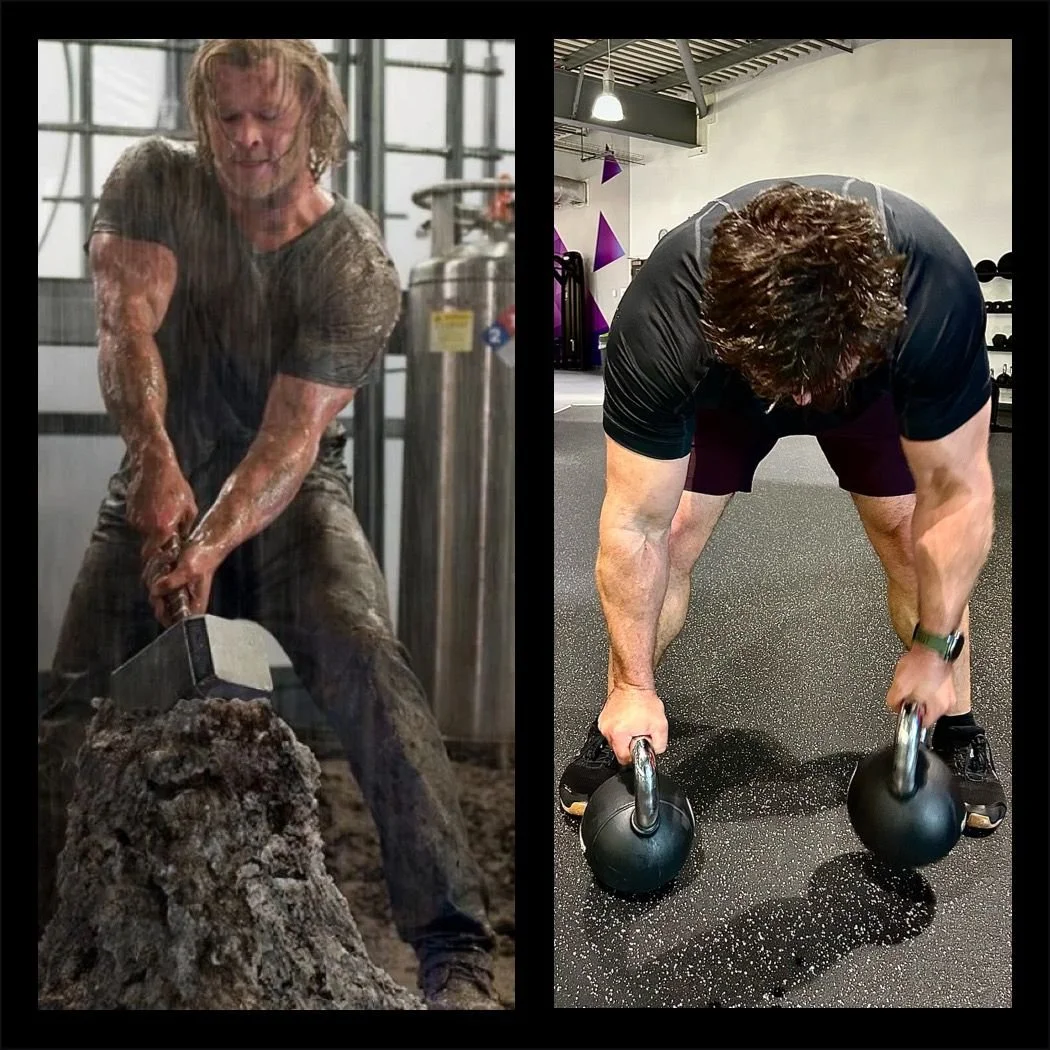From Injury to Iron: Chris’ Strength and Performance Comeback
This is Chris - mid-40s, works hard, trains hard, and knows what it feels like to start again after an injury, well actually that is Chris Hemsworth in Thor but the guy with bigger forearms next to him… that is my client Chris.
When Chris first came to me, he was recovering from rotator cuff surgery after a mountain biking accident. He’d done his rehab, got the all-clear to start strengthening, and had an arbitrary goal in mind.. one that most blokes have at some point..
“I want to bench 100kg”
That kind of focus makes my job easier. We didn’t rush it, but we also didn’t tiptoe around it. The plan was simple rebuild strength, rebuild confidence, and do it with good movement.
Within two months, Chris hit that goal. Not only did he bench 100kg, but his overall upper body strength and control had improved massively. I’d love to take all the credit for this but prior to his surgery Chris was decent at ring dips and had got himself up to 70-80kg on the bench press, but still we were both surprised with how quickly he hit that goal.
The next challenge
After hitting that benchmark, we could have kept chasing heavier numbers. But Chris is the type who likes having a purpose behind his training. His background in mountain biking means he’s not just interested in looking strong he wants to perform and he is carrying a fair bit of lean mass on his frame anyway at this point.
So we shifted gears. The new goal?
Improve VO₂ max (a measure of aerobic capacity)
Build strength endurance
Develop his phosphagen and anaerobic systems (the energy systems that fuel short bursts of power and sustained effort)
In other words, Chris wanted to build the engine behind the muscle and drop a little fat in the process.
How we trained
We built his new phase around:
Circuit training — high-intensity, full-body work with minimal rest.
Sled pushes and drags — brutal, but excellent for leg drive, conditioning, and mental toughness.
Bodyweight and strength work — movements that challenge control, stability, and strength across multiple planes.
It’s been a mix of science and sweat. Strength work to keep the numbers high. Conditioning to make him last longer on the bike, whatever I throw at Chris he just goes all in 100%
The results
Chris recently had a DEXA scan, and the results speak for themselves, more lean muscle, less fat, and improved body composition across the board. something like top 0.5 percentile in his age category and we were also pleased to see it was well balanced across both sides of his body too.
But beyond the data, there’s a bigger point here.
Building strength after injury isn’t just about “getting back to where you were.” it’s about surpassing it and not letting a certain activity or number become a mental block.
Chris went from rehabbing his shoulder to benching 100kg, from building muscle to pushing sleds and chasing performance numbers that would put him ahead of 95% of men his age.
The takeaway
A lot of people in their 40s and 50s think they’re too old to build muscle, regain strength, or push their conditioning. Basically you are not.. you’re likely no way near what you could actually achieve.
You just need a plan that respects where you are and some sort of goal or reason to actually want to do it.
Strength training doesn’t just make you look better. It builds resilience, improves mobility, and supports the kind of fitness that actually translates to life, whether that’s mountain biking, playing with your kids, or just feeling capable again. Chris does all 3 of those things and more.
Chris’ story isn’t an exception. It’s what happens when you combine consistency, good coaching, and a goal worth working for.

